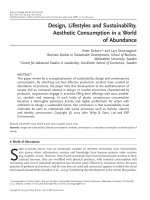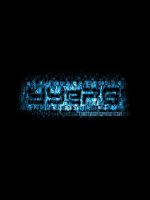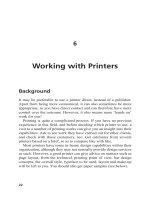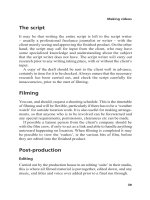101 activities for teaching creativity and problem solving
Bạn đang xem bản rút gọn của tài liệu. Xem và tải ngay bản đầy đủ của tài liệu tại đây (3.65 MB, 410 trang )
TeAM
YYePG
Digitally signed by TeAM YYePG
DN: cn=TeAM YYePG, c=US, o=TeAM
YYePG, ou=TeAM YYePG,
email=
Reason: I attest to the accuracy and
integrity of this document
Date: 2005.02.22 18:42:22 +08'00'
About This Book
Why is this topic important?
We live in a world of turbulent change. New data. New people. New technology. New problems. We are bombarded every day with something new. Realities shift faster than we can deal with them. In this turbulent
world, traditional problem-solving methods no longer are effective in all situations. Routine, analytical
approaches—the ideal of the Industrial Age—rarely work now. Instead, we must look for new ways to deal
with change—creative solutions we can customize to fit any situation. Above all, we need new solution
options, rather than relying on “the tried-and-true.” The more solution options we have, the greater the odds
that one will achieve our goals. Conventional brainstorming is not sufficient. Groups need exposure to diverse
idea generation approaches and training in how to apply them.
What can you achieve with this book?
More organizations than ever now offer training in how to use idea generation methods. This should be a priority, since it obviously is more beneficial over time to train employees how to apply skills themselves, rather
than a single spoon-feeding of the steps needed to implement one or more idea generation activities. It is
better if employees also can learn how to use some of these methods and incorporate them into their problem-solving activities. Every training session that can teach employees how to apply even rudimentary skills
obviously can be valuable in the long run. Thus, a unique aspect of this book is its duality in providing stepby-step guides to 101 idea generation methods while simultaneously providing participants with training in
how to use them. As is fairly well known, practicing a new skill within a relevant domain can enhance significantly participant learning and applied behaviors. That is, the training is more likely to “take” if it uses challenges faced by the participants. As a result, many training sessions also can serve as idea generation events
that deal with specific organizational challenges—the perfect “value-added” component!
How is this book organized?
This book is divided into three parts: (1) Getting Started, (2) Individual and Group Activities, and (3) Group
Only Activities. The first section discusses the broad-reaching importance of idea generation, and the organization of idea generation activities (Chapter 1); major creative thinking principles (Chapter 2); and the general nature of problems, problem solving, creativity, and a guide for selecting activities appropriate for different
situations (Chapter 3). Part II includes activities originally designed for individuals, but re-engineered for
group use. Finally, Part III presents original group activities based on either brainstorming or “brainwriting”
(silent, written idea generation within a group) procedures. The same format is used for each exercise. Major
headings include: Background, Objectives, Participants, Materials, Supplies, and Equipment, Handouts, Time,
Related Activities, Procedure, Debrief/Discussion, and Variations (if applicable). Because all of the activities are
geared toward group idea generation, the Objectives and Participants sections will contain identical information. Many of the activities also will have identical information for Materials, Supplies, and Equipment,
although there are exceptions.
About Pfeiffer
Pfeiffer serves the professional development and hands-on resource needs of
training and human resource practitioners and gives them products to do their
jobs better. We deliver proven ideas and solutions from experts in HR development and HR management, and we offer effective and customizable tools to
improve workplace performance. From novice to seasoned professional, Pfeiffer is the source you can trust to make yourself and your organization more
successful.
Essential Knowledge Pfeiffer produces insightful, practical, and
comprehensive materials on topics that matter the most to training
and HR professionals. Our Essential Knowledge resources translate the expertise
of seasoned professionals into practical, how-to guidance on critical workplace
issues and problems. These resources are supported by case studies, worksheets,
and job aids and are frequently supplemented with CD-ROMs, websites, and
other means of making the content easier to read, understand, and use.
Essential Tools Pfeiffer’s Essential Tools resources save time and
expense by offering proven, ready-to-use materials—including exercises,
activities, games, instruments, and assessments—for use during a training
or team-learning event. These resources are frequently offered in looseleaf or
CD-ROM format to facilitate copying and customization of the material.
Pfeiffer also recognizes the remarkable power of new technologies in
expanding the reach and effectiveness of training. While e-hype has often
created whizbang solutions in search of a problem, we are dedicated to
bringing convenience and enhancements to proven training solutions. All our
e-tools comply with rigorous functionality standards. The most appropriate
technology wrapped around essential content yields the perfect solution for
today’s on-the-go trainers and human resource professionals.
w w w. p f e i f f e r. c o m
Essential resources for training and HR professionals
To my daughters, Sarah and Laura, and my granddaughter, Chloe
101
Activities for
Teaching
Creativity and
Problem Solving
LLLL
A r t h ur Va n G u n d y , P h .D.
Copyright © 2005 by John Wiley & Sons, Inc.
Published by Pfeiffer
An Imprint of Wiley.
989 Market Street, San Francisco, CA 94103-1741 www.pfeiffer.com
Except as noted specifically below, no part of this publication may be reproduced, stored in a retrieval system,
or transmitted in any form or by any means, electronic, mechanical, photocopying, recording, scanning, or
otherwise, except as permitted under Section 107 or 108 of the 1976 United States Copyright Act, without
either the prior written permission of the Publisher, or authorization through payment of the appropriate percopy fee to the Copyright Clearance Center, Inc., 222 Rosewood Drive, Danvers, MA 01923, 978-750-8400, fax
978-646-8600, or on the web at www.copyright.com. Requests to the Publisher for permission should be
addressed to the Permissions Department, John Wiley & Sons, Inc., 111 River Street, Hoboken, NJ 07030, 201748-6011, fax 201-748-6008, e-mail:
Certain pages from this book are designed for use in a group setting and may be reproduced for educational/training activities. These pages are designated by the appearance of the following copyright notice at the
foot of the page:
101 Activities for Teaching Creativity and Problem Solving. Copyright © 2005 by John Wiley & Sons, Inc. Reproduced by permission of Pfeiffer, an Imprint of Wiley. www.pfeiffer.com
This notice must appear on all reproductions as printed.
This free permission is limited to the paper reproduction of such materials for educational/training events. It
does not allow for systematic or large-scale reproduction or distribution (more than 100 copies per page, per
year), electronic reproduction or inclusion in any publications offered for sale or used for commercial purposes—none of which may be done without prior written permission of the Publisher.
For additional copies/bulk purchases of this book in the U.S. please contact 800-274-4434.
Pfeiffer books and products are available through most bookstores. To contact Pfeiffer directly call our Customer Care Department within the U.S. at 800-274-4434, outside the U.S. at 317-572-3985 or fax 317-572-4002
or visit www.pfeiffer.com.
Pfeiffer also publishes its books in a variety of electronic formats. Some content that appears in print may not
be available in electronic books.
Printed in the United States of America
ISBN: 0-7879-7402-1
Library of Congress Cataloging-in-Publication Data
VanGundy, Arthur B.
101 activities for teaching creativity and problem solving / Arthur B. VanGundy.
p. cm.
Includes bibliographical references.
ISBN 0-7879-7402-1 (alk. paper)
1. Creative ability in business. 2. Creative ability—Study and teaching. 3. Creative thinking—Study and
teaching. 4. Problem solving—Study and teaching. 5. Organizational effectiveness. I. Title: One hundred one activities for teaching creativity and problem solving. II. Title: One hundred and one activities for
teaching creativity and problem solving. III. Title.
HD53.V357 2004
658.3′1244—dc22
2004015676
Acquiring Editor: Martin Delahoussaye
Director of Development: Kathleen Dolan Davies
Editor: Rebecca Taff
Senior Production Editor: Dawn Kilgore
Manufacturing Supervisor: Bill Matherly
Printed in the United States of America
Printing 10 9 8 7 6 5 4 3 2 1
Contents
Acknowledgments xi
Getting Started 1
Chapter 1: Creativity and Problem Solving
Why Use Creativity Techniques?
Generating Creative Ideas
Creativity Training in Organizations
A Typology of Idea Generation Activities
Chapter 2: Six Key Principles for Encouraging Creativity
1.
2.
3.
4.
5.
6.
Separate Idea Generation from Evaluation
Test Assumptions
Avoid Patterned Thinking
Create New Perspectives
Minimize Negative Thinking
Take Prudent Risks
Chapter 3: Linking Problems, Solutions, and Activities
Defining Problems
Problem Solving
Creativity and Serendipity
A Few of My Favorite Activities
A Guide for Selecting Activities
How to Evaluate and Select Ideas in a Group
Getting Ready: Different Uses Warm-Up Exercise
Activity Selection Guide
4
4
4
5
11
12
15
14
16
17
18
21
21
23
23
24
26
29
30
32
Individual and Group Activities
37
Chapter 4: Basic Idea Generation:“No Brainers”
1.
2.
3.
4.
5.
6.
7.
8.
3
Bend It, Shape It
Brain Borrow
Copy Cat
Dead Head Deadline
Get Crazy
Idea Diary
Mental Breakdown
Music Mania
39
40
44
47
50
52
55
57
61
vii
9.
10.
11.
12.
Name Change
Stereotype
Switcheroo
Wake-Up Call
65
68
71
73
Chapter 5: Ticklers: Related and Unrelated Stimuli
13.
14.
15.
16.
17.
18.
19.
20.
21.
Excerpt Excitation
Idea Shopping
A Likely Story
PICLed Brains
Picture Tickler
Rorschach Revisionist
Say What?
Text Tickler
Tickler Things
Chapter 6: Combinations
22.
23.
24.
25.
26.
27.
28.
29.
30.
31.
32.
33.
34.
35.
79
84
88
92
97
101
105
111
115
119
Bi-Wordal
Circle of Opportunity
Combo Chatter
Ideas in a Box
Ideatoons
Mad Scientist
Noun Action
Noun Hounds
Parts Is Parts
Parts Purge
Preppy Thoughts
SAMM I Am
666
Word Diamond
Chapter 7: Free Association Activities:“Blue Skies”
36.
37.
38.
39.
40.
41.
42.
43.
44.
45.
46.
47.
48.
49.
viii
77
Brain Mapping
Doodles
Essence of the Problem
Exaggerate That
Fairy Tale Time
Idea Links
Imaginary Mentor
Lotus Blossom
Say Cheese
Sense Making
Skybridging
Tabloid Tales
We Have Met the Problem and It Is We
What if . . . ?
120
123
127
130
133
137
140
143
146
150
153
156
159
162
167
169
173
177
181
184
189
193
196
199
201
204
207
211
214
Contents
Chapter 8: Grab Bag: Miscellaneous Activities
217
Backward Activities
50. Law Breaker
51. Problem Reversals
52. Turn Around
Just Alike Only Different Activities
53. Bionic Ideas
54. Chain Alike
55. I Like It Like That
56. What Is It?
Group Only Activities
229
234
238
241
245
Chapter 9: Brainstorming with Related Stimuli
57.
58.
59.
60.
61.
62.
63.
64.
65.
66.
67.
68.
69.
70.
218
221
225
247
Be #1
Blender
Drawing Room
Get Real!!
Idea Showers
Modular Brainstorming
Pass the Hat
Phillips 66
Play by Play
Rice Storm
Spin the Bottle
Story Boards
That’s the Ticket!
What’s the Problem?
249
252
255
258
261
264
268
272
274
278
282
284
287
290
Chapter 10: Brainstorming with Unrelated Stimuli
71.
72.
73.
74.
75.
76.
77.
78.
79.
80.
Battle of the Sexes
Best of. . .
Brain Splitter
Force-Fit Game
Grab Bag Forced Association
It’s Not My Job
Rolestorming
Roll Call
Sculptures
Super Heroes
Chapter 11: Brainwriting with Related Stimuli
81.
82.
83.
84.
85.
86.
Contents
As Easy As 6–3–5
Brain Purge
Group Not
Idea Mixer
Idea Pool
Museum Madness
295
296
299
302
306
309
311
314
317
321
325
329
330
333
335
338
340
342
ix
87.
88.
89.
90.
Organizational Brainstorms
Out-of-the-Blue Lightning Bolt Cloudbuster
You’re a Card, Andy!
Your Slip Is Showing
Chapter 12: Brainwriting with Unrelated Stimuli
91.
92.
93.
94.
95.
96.
97.
98.
99.
100.
101.
Altered States
Balloon, Balloon, Balloon
Bouncing Ball
Brainsketching
Doodlin’ Around the Block
Greeting Cards
The Name Game
Pass the Buck
Post It, Pardner!
Puzzle Pieces
The Shirt Off Your Back
References 389
About the Author 391
Pfeiffer Publications Guide
x
344
346
348
351
355
356
360
364
366
369
372
376
379
382
385
387
393
Contents
Acknowledgments
would like to thank the four Pfeiffer personnel who were instrumental to the development of this book. First, I would like to thank Laura Reizman for her help in working
with all of the details involved in marketing this book, as well as other administrative
tasks. Next, my gratitude to Kathleen Dolan Davies in handling all of the production
aspects with great skill and, especially, patience. Special thanks go to Dawn Kilgore for
once again helping with final production elements. Finally, I cannot thank and praise
enough acquisitions editor Martin Delahoussaye. He played a pivotal role in working
with me to “birth” this project during its initial conceptualization and then in working
out the overall structure and format. All of these people, who work in a relatively highstress business, were an absolute delight to work with. Thank you all.
I
xi
L
Getting Started
L
LLLL
Chapter 1
Creativity and Problem Solving
Creativity can solve almost any problem. The creative act, the defeat of habit by originality,
overcomes everything.
—George Lois
efore applying any of the activities presented in this book, it first is important to
establish some context. This chapter provides an overview of the importance of idea
generation methods, a typology of the different types of activities, and information for
facilitators on how to use them
B
Rapidly changing environments with complex and diverse elements require flexible
and innovative responses. Rigid operating systems are ineffective in such environments.
Flexible systems, in contrast, are characterized by multiple solution possibilities. Creative
solutions can provide flexibility by increasing our options and helping us cope and adapt.
The more ideas we have, the more solution avenues will be at our disposal. New ideas
can open up new worlds, new insights, and new ways of doing old things. Creativity, in
short, can help us reinvent ourselves and our organizations.
Some management theorists advocate “reinventing the organization.” To start over,
organizations must test assumptions about their processes and procedures and devise
new ways of doing things. In effect, there must be a “defeat of habit,” as advertising executive George Lois notes in the quote at the beginning of this chapter. These new beginnings, however, require new ideas and new ways of looking at things—in effect, creative
perspectives.
3
Why Use Creativity Techniques?
Organizations need creative perspectives and solutions to conceive new product, service, and
process ideas, marketing strategies, and ways of allocating and using resources. Creativity is
the magic word that can turn around an organization, company, division, or department.
Many organizations, such as 3M, Frito-Lay, and Texas Instruments, have introduced
systematic creativity activities into their training and production processes with outstanding results. Frito-Lay, for instance, reports documented cost savings over a four-year period of
almost $600 million due to their creativity training programs (Morrison, 1997). Although all
may not achieve such spectacular outcomes, we can improve our current products, programs, services, and processes more dramatically than we ever imagined.
There is nothing mysterious about creativity; it’s just a matter of applying the right attitude
and technology in a climate receptive to creative thinking and new ideas. The technology of creativity techniques can multiply and magnify human brainpower in organizations.
Unfortunately, much of this brainpower typically is underused and underappreciated.
We often take our most important and useful resources for granted. Whether because of
familiarity or simply lack of awareness, we fail to harness creative minds. Or when we do
use this brainpower, we lack the techniques to leverage the mind’s full potential whether
working alone or in groups.
Generating Creative Ideas
Many of us don’t have the resources or abilities to generate the creative ideas we need.
This is especially true in the business world with its complex, ever-changing environments. Competitive pressures require faster delivery of new products and services. In
short, businesses are pushed to innovate before the competition does. Failure to do so can
yield even fewer creative responses—and less financial profit. The need to innovate is not
limited to the corporate world, however. Service, government, and nonprofit organizations also can experience similar pressures to cope with changes
in markets served or the regulations imposed on them.
Organizations cannot count on internal “creatives” or customer input to solve all their problems; even traditional group
idea generation has its weaknesses. Brainstorming, as practiced in
many organizations, is about as effective as consulting a crystal ball.
Even experienced brainstorming groups find that the well runs
dry after interacting with the same people year after year.
Most individuals and groups in organizations occasionally
need a brainpower boost to achieve “home run” or breakthrough
ideas. And they need a number of methods in their idea toolkits.
The more methods they can employ, the greater the odds of producing a hot idea. This need is where organizational training can help.
Creativity Training in Organizations
In recent years, organizations have turned to formal creativity initiatives to help fill their
“idea pipelines.” These pipelines are the conduits they use to maintain competitive
advantage or achieve objectives through a constant infusion of new ideas. Many product-
4
101 Activities for Teaching Creativity and Problem Solving
based organizations such as 3M and Procter & Gamble even try to generate an increasing
proportion of their revenues through regular introduction of new products. Service and
nonprofit or government organizations can do the same with their outputs, such as new
ways to improve customer service or solicit donations. Fresh ideas clearly are the engines
that drive organizational innovation.
There are a number of ways in which organizations can become idea generation fountains. Formal and informal in-house idea generation sessions probably are most common.
Outside consultants often are brought in to facilitate planned, formal sessions. Or some
organizations designate employees responsible for the generation and dissemination of
new ideas. Other organizations use in-house idea generation most of the time, but periodically invite outside resources to help facilitate off-site brainstorming retreats. Of course,
combinations of all of these also are possible.
Due to difficult financial environments, more organizations are looking to internal
trainers to lead such sessions. Once these trainers have received the appropriate training, they
can deliver at least two services. The first is the design and facilitation of idea generation sessions
for selected groups of employees. These sessions can be scheduled several times a year or as
needed. Thus, regular sessions might be held for issues of strategic importance—for
instance, creating a new product line, service, or strategy to achieve a mission or vision
statement. Similar sessions might be held whenever diverse input is needed for occasional tactical challenges.
The second service is training in how to use idea generation methods. Many of the activities
in this book can be used without the assistance of a trained and skilled facilitator. The
step-by-step presentations of the activities can be implemented by most groups with a little study and practice. Of course, the ideal situation would be first to provide training in select
activities, monitor and provide feedback when groups use them, and then encourage groups to
apply them on their own, remaining available for consultations as needed.
A Typology of Idea Generation Activities
Before looking at the activities, however, you might want to understand more about how
they work. This knowledge should make them easier to use and easier to teach others to
use, and also increase your understanding about creative thinking in general. If you don’t
want this information and want to begin using the activities, move on to Chapter 4 (or
chapters following it).
It is important, however, to understand the distinction between individual and group activities. This is because the difference can be misleading with respect to which activities to
use. In fact, for the purposes of this book, the distinction is an artificial one, based on how
the activities originally were created. Specifically, groups can use all of the individual activities,
but individuals cannot use all of the group activities.
This difference is because some of the group activities were designed originally with
only groups in mind; others only for individuals. For instance, some activities involve
passing idea cards or Post-it® Notes from one person to another. (You could try this as an
individual, but you would probably feel a little silly!) Thus, activities that require interaction with other people must use other people. Some activities, in contrast, can be used by
either individuals or groups. However, it is important to understand that ALL of the 101
activities in this book can be used by groups and are presented for use by groups.
Creativity and Problem Solving
5
Individual Activities
Individual activities can be classified in several ways. After reviewing the available activities, I settled on five (numbers for the individual activities are in brackets):
1. Basic Idea Generation (Chapter 4) require relatively little effort. An example would be
asking a friend for an idea (Brain Borrow [2]).
2. Related and Unrelated Stimuli (Chapter 5) generate ideas by providing some sort of
stimulus to play against. Such stimuli might be related directly to a problem or unrelated. Examples of related stimuli would be using the elements of a fund-raising campaign to solicit money for your nonprofit organization by using activities such as
Bi-Wordal [22] or Combo Chatter [24]), both of which rely on words related to the
problem. For the same problem, you also might play off of (free associate from) unrelated stimuli, such as unrelated pictures (for example, Picture Tickler [17]), words
(PICLed Brains [16]), and objects (Tickler Things [21]), and see what ideas result.
3. Combinations (Chapter 6) blend or compare different problem elements and use the
combinations and juxtapositions of elements to prompt ideas. Examples include
Combo Chatter [24], Noun Action [28], and Parts Is Parts [30].
4. Free Association Activities (Chapter 7) rely on each previous idea triggering a subsequent idea to stimulate creative thinking. An example would be using the words
“What if?” to help inspire ideas (What if. . . ? [49]). Or you might rely on exaggeration
(Exaggerate That [39]) to help stretch thinking.
5. Miscellaneous Activities (Chapter 8) represent two types of activities: backward and just
alike only different. Backward activities reverse some aspect of a problem to produce a
different perspective and, it is hoped, new ideas. Thus, a group might reverse
assumptions about a problem (Turn Around [52]) and use the reversals as stimulators.
Just alike only different procedures use analogies to generate ideas. Two examples are
Bionic Ideas [53] and Chain Alike [54].
Group Activities
One way to classify group activities is according to whether they are brainstorming or
brainwriting methods. Brainstorming, of course, refers to traditional verbal idea generation in
a group. Brainwriting is a term coined in Germany that refers to the silent, written generation of
ideas in a group setting.
Brainstorming and Brainwriting
All things being equal, brainwriting groups generate more ideas than brainstorming groups. One
reason is that when we interact verbally, we are often not as productive as we might otherwise be. We criticize ideas when we should not, we feel inhibited, we worry about what
other people will think of our ideas, and we become sidetracked with various issues and
hidden agendas. More important, research suggests that the superiority of brainwriting
over brainstorming is due primarily to the fact that only one person can speak at a time in
brainstorming groups (Diehl & Stroebe, 1991; VanGundy, 1993). Brainwriting groups, in
contrast, may have four or five people generating ideas simultaneously.
If brainwriting yields more ideas than brainstorming, why even use brainstorming
6
101 Activities for Teaching Creativity and Problem Solving
groups? The answer is that we are social creatures. Most of us would have trouble not
talking for a long time. We clearly can satisfy more social needs in brainstorming groups.
Moreover, some brainstorming activities provide a structure that offsets some disadvantages. Thus, if a group follows a technique’s procedures as written, it should be more successful
than a traditional brainstorming group with no structure.
To test these notions, I once conducted an experiment using six different types of idea
generation procedures (VanGundy, 1993). Each procedure was tested using six categories
of four-person groups:
• Groups using procedure 1 generated ideas without any formal instructions.
• Groups using procedure 2 generated ideas but were instructed to follow brainstorming rules and defer judgment (as were all subsequent groups).
• Groups using procedure 3 generated ideas using one brainstorming technique
(PICLed Brains [16]).
• Groups using procedure 4 generated ideas using a brainwriting procedure in which
the group members did not see one another’s ideas.
• Groups using procedure 5 generated ideas using a brainwriting procedure in which
the participants did see each other’s ideas (Brain Purge [82]).
• Groups using procedure 6 generated ideas using combinations of brainstorming and
brainwriting activities. In addition, each group using procedure 6 contained two
skilled idea generation facilitators.
All the groups had 45 minutes to generate new snack food product ideas (which were
evaluated later by a food products company). When ideas were counted, the groups
using procedures 1 through 5 collectively generated about 1,400 ideas, and the groups
using procedure 6 generated about 1,200 ideas. In fact, groups using procedure 6 generated more than ten times as many ideas as groups using procedure 1!
The results also suggested that groups using procedure 5 (brainwriting while seeing one
another’s ideas) generated almost four times as many ideas as groups using brainstorming without
instructions. There clearly are advantages to both using brainstorming and brainwriting
procedures (as well as using skilled facilitators).
Related Versus Unrelated Stimuli
Another way to classify group activities is according to whether the stimuli used are related or
unrelated to the problem. An example of a related stimulus would be using different parts of
a coffee mug to suggest ways to improve it. Most combination activities are based on this
principle. Thus, you might combine the handle with the base to spark an idea. In this
case, you might think of an integrated handle and base cup warmer. You could attach different cups and the coffee would keep warm even while the cup is in your hand.
An example of unrelated stimuli would be using different parts of a coffee mug to
suggest ways to improve a product such as a flashlight or to improve customer service.
For instance, the heat of a coffee mug might suggest adding a heated function to a flashlight to serve as a handwarmer, and a mug holding a liquid might prompt the idea of a
flashlight with a small tube of water for emergencies. Or a coffee mug might suggest the
idea of rewarding loyal customers with designer coffee mugs or to develop a customer
Creativity and Problem Solving
7









